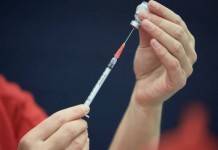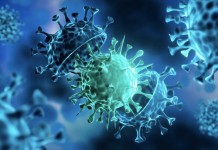What Is Endocarditis, How Is It Treated?
Endocarditis is a microbial (bacterial) infection of the endothelial layer, the lining region of the heart valves.The disease occurs in people with congenital or acquired heart diseases.
Abnormal blood flow observed in these patients due to heart disease endothelial layer damage by revealing the collagen beneath this layer that says Congenital-Pediatric Cardiology Specialist Alpay Celiker, said that this situation makes it very easy to settle bacteria. Alpay Celiker, “Fibrin and platelets accumulate on this collagen and a bacterium-free clot occurs. Especially in the mouth of the bacteria entering the bloodstream infection develops here. Endocarditis developed after early surgery, surgical region, artificial valves or artificial materials during the surgical process of bacterial contamination Rarely fungal infection can cause this disease, “he said.
What are the symptoms of endocarditis?
Fever of unknown cause or persistent fever is the most important symptom of the disease. Patients with fever that persists for days should bring to mind this disease. Endocarditis has been ongoing for some time;
• Fever that persists for days, weeks
• Resentment, weakness
• Weight loss, night sweats
• Examination shows spleen enlargement and hearing different murmurs in the heart.
Endocarditis affecting the left side of the heart, brain, arms and legs, liver, spleen, kidneys and rarely in the coronary arteries due to clot beating and the second symptoms may be the end of the heart. Endocarditis affecting the heart can cause problems in the lungs.
Diagnosis is not easy!
Diagnosing endocarditis is not always easy. If there is an underlying structural heart disease or if the patient has had a previous heart surgery, it is necessary to suspect the disease in the presence of fever.
The production of bacteria in blood cultures is the most important diagnostic test for endocarditis. Although some of the patients have endocarditis, bacteria cannot be produced in the blood. Cardiac echocardiography is very important in imaging of infected clots secondary to endocarditis. , liver function tests should be performed.
How is endocarditis treated?
Treatment of patients with endocarditis is quite long. Patients should be treated with intravenous antibiotics for at least 4-6 weeks. Antibiotic selection varies depending on the patient, the bacteria produced or suspected, and the underlying heart problem. Cardiac surgery can be performed only if the signs of endocarditis due to heart failure are severe or if there is a risk of clotting. In some patients, treatment may present great difficulties.
Who can be seen?
Many congenital or acquired heart diseases pose a risk for endocarditis. In addition, the risk of heart diseases is very low.
• Persons with previous endocarditis attacks
• In patients with artificial valves or materials
• Congenital heart disease with untreated bruising (including those treated with shunt or conduit)
• In the first 6 months after the procedure in patients treated with surgical or interventional methods with artificial material
• In patients with sequelae of cardiac repair near surgically repaired artificial patch and material
What should we do to prevent endocarditis?
• Good dental hygiene and prevention of gingivitis is an important prevention strategy. Therefore, children should be taught tooth brushing in the early period and tooth decay should be prevented.
• Antibiotics are required to eliminate bacteria entering the bloodstream during certain procedures.
• These antibiotics should be administered once, one hour before the patient’s procedure. Antibiotic selection may vary depending on the patient’s antibiotic allergy and the type of intervention he / she will undergo. They may be given orally, or intravenously if the vascular access is opened.
Dental Initiatives: dental interventions that may cause perforation of the gums, tooth root, oral mucosa,
In respiratory attempts,
Antibiotics may be required for skin and musculoskeletal procedures.
Prophylaxis is not recommended in genitourinary and gastrointestinal interventions.




